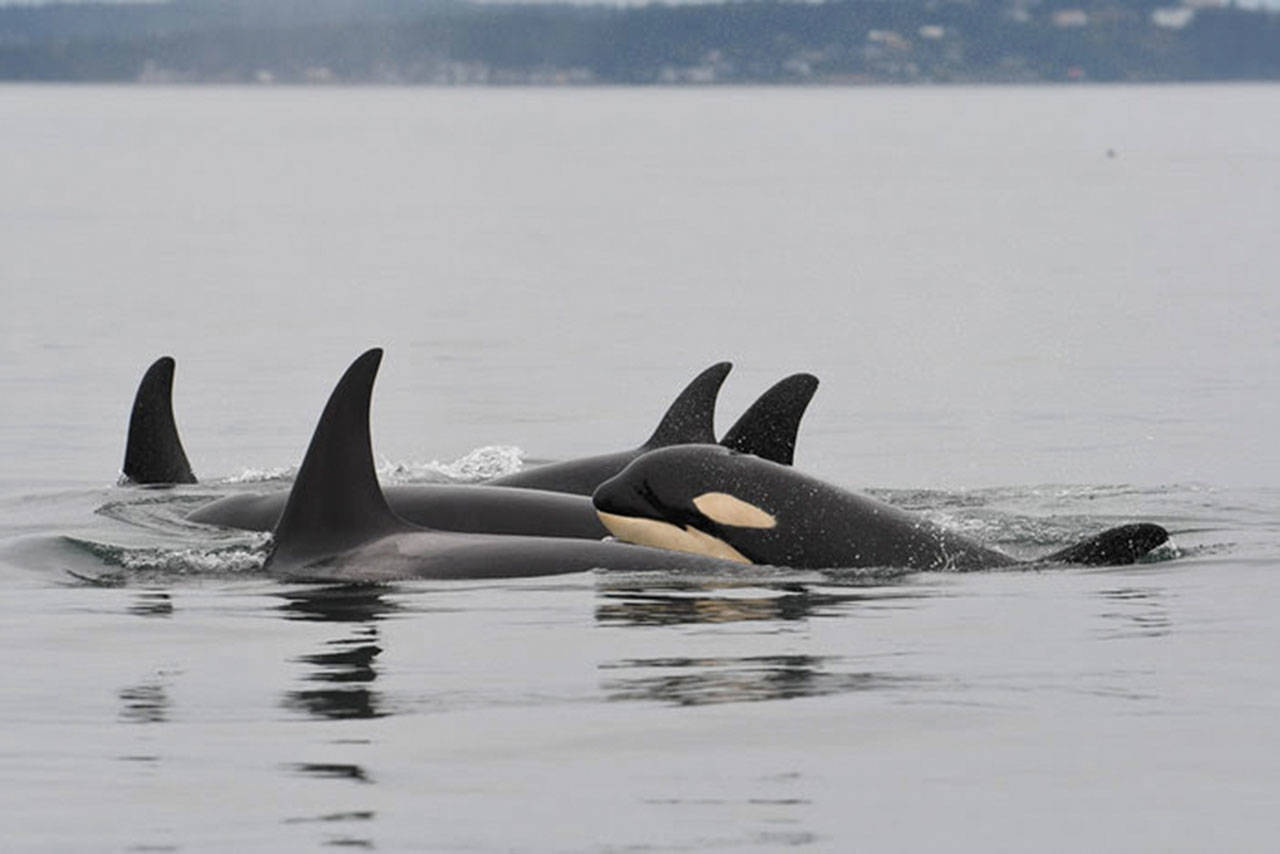forum
library
tutorial
contact

"Dammed to Extinction":
Wildlife Concerns Shown Through Film
by Renny Acheson
Whitman Wire, November 20, 2019
|
the film forum library tutorial contact |

|
"Dammed to Extinction":
by Renny Acheson
|
"I think any long-term happening that has an environmental impact
should cause everyone to have a personal stake in that, directly or indirectly,"
 Audience members bore witness to images of thinning orca whales in the Puget Sound, slack rivers that used to be rushing and the testimonies of Pacific Northwest residents against the four lower Snake River dams on Thursday, Nov. 14, in the Maxey Auditorium.
Audience members bore witness to images of thinning orca whales in the Puget Sound, slack rivers that used to be rushing and the testimonies of Pacific Northwest residents against the four lower Snake River dams on Thursday, Nov. 14, in the Maxey Auditorium.
All this was exhibited in the film "Dammed to Extinction," during which members of the Whitman and Walla Walla communities watched the impacts and future implications of hydropower on wildlife and human populations.
Director Michael Peterson's 2019 documentary traces the suffering southern resident orca whales of the Puget Sound up the Columbia and Snake Rivers, where chinook salmon and steelhead trout struggle to reach the Pacific in the appropriate time frame for breeding due to hydropower apparatuses that inhibit fish passage.
While the issue at hand may appear to only impact two or three species, it carries greater environmental implications for interconnected landscapes.
"Often times ecosystems are connected so if one thing goes, you have a cascade effect and other things begin to go as well so it's important that we strive to stop extinction in every ecosystem as much as we can," said first-year attendee Leander Swan.
Derived from Hood River-based author Steven Hawley's "Recovering a Lost River," the film highlights the biological, ecological and social effects of the four dams built by the Army Corps of Engineers. The Ice Harbor Dam, Lower Granite Dam, Lower Monumental Dam and the Little Goose Dam were constructed and began operation in the 1960s and 70s, distributing energy to the Bonneville Power Administration.
Retired fish biologist for the Army Corps of Engineers Chris Pinney relayed his thoughts on the film in an email to The Wire.
"I think it was purposely shown locally to expose the public and the local Corps of Engineers office, and their burdened over-influence command to Bonneville Power Administration, to one another concerning the advanced rate of linked river-to-ocean-to-sound ecosystem collapse in west coast subbasins," Pinney said.
In telling the story of the dams, Peterson emphasizes the dams' effects on indigenous tribes' fishing rights. The lack of salmon and steelhead trout combined with the permanent alteration of sites such as Celilo Falls in Oregon has had a profound effect on the lifestyle and culture of surrounding groups, including the Cayuse and Nez Perce people.
"I think any long-term happening that has an environmental impact should cause everyone to have a personal stake in that, directly or indirectly," said sophomore attendee Leah Samuels.
On the other side of the state, the film exhibits how the southern resident pod of orcas in the Puget Sound struggle to obtain enough nutrients without adequate salmon and steelheads on their migration route down from Alaska. One scene in the film shows a mother orca carrying her dead calf for over two weeks.
"I definitely did cry during some parts. It was just so emotionally intense, which I think is what they wanted to do," said sophomore attendee Karsten Beling.
The issue of the dams tends to be contentious and highly political. The film showed multiple Washington and Idaho politicians defending the dams for their utility in producing the energy that powers the Pacific Northwest.
"The Pacific Northwest needs some true and effective leadership in our agency heads and politician 'decision-makers' to walk away from the corporate influences on their campaigns and do the primary actions that science, not engineering or technology, has developed as necessary to recovery such vital ecosystems and their reliant inhabitant species across their lifecycles and life histories," Pinney said.
After the film concluded, an impassioned discussion began between Peterson, Hawley and multiple audience members, surrounding the legitimacy of the statistics presented by the film and the realities of breaching the dams. Participants from the audience represented the Army Corps of Engineers, Whitman faculty and students, fishing enthusiasts and other community members interested in the subject matter.
"You could see the ideological difference between the two parties, for and against," Beling said.
The issue of the dams also tends to hit close to home for residents of eastern Washington, especially for those who work on and around the dams. There is an ongoing conversation around the economic implications if the dams were to be breached.
"I think it's important that there's two sides to an argument, and both sides are heard," Swan said.
The film places itself into the complex histories of environmental and social justice efforts, along with conservation ethics and policy debates. While the issues were in no way resolved after the film, the event opens up more opportunities for communication about these structures and these ecosystems in the present and future of Pacific Northwest ecological and human communities.
learn more on topics covered in the film
see the video
read the script
learn the songs
discussion forum
